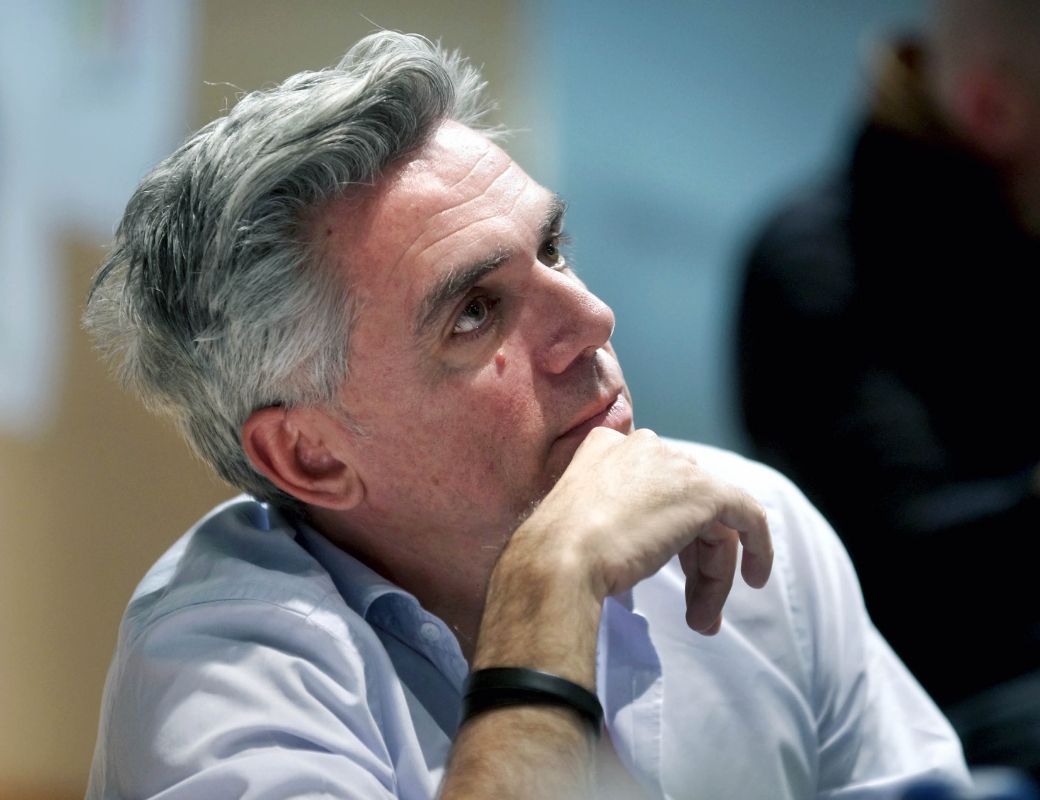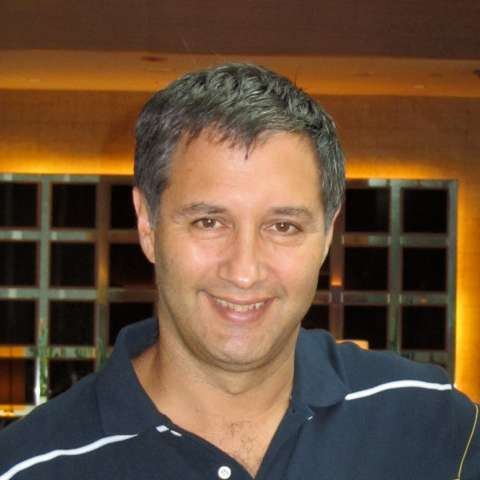At Glyndebourne last year, the audience was treated to two vastly different styles of production in a single evening. Laurent Pelly’s Poulenc double bill juxtaposed the monologue La Voix humaine, in which “Elle” is alone on a blank stage with only a telephone, with the surreal farce Les Mamelles de Tirésias, in which sets and costumes are crowded with a profusion of ideas. In its most striking set piece, the entire stage was engulfed by 40,049 puppet babies.

Where, I ask, does Pelly get his ideas? He instinctively points to what’s intrinsic in the work – the massed babies are indeed there in the original. But much of Pelly’s inspiration comes from broader cultural context: given Mamelles is a surrealist piece, he and set designer Caroline Ginet spent hours poring over books of surrealist art. Another striking image is that of characters face-painted to match their primary coloured costumes, much in the vein of the living statues we often see in European city centres. “The piece is full of subjects which overlap: for me, it's an idea which goes with the madness inherent in the work”.
As a director, Pelly is madly busy too. He almost always designs the costumes for his productions, and directs straight theatre in addition to opera. “I’m not often at home,” he tells me. “No more than two or three months of the year, because I’m working such a lot. Last year, what with all the postponements caused by Covid, I did six new productions.” The idea of “time off work” doesn’t seem to appeal to Pelly: six years ago, at the end of his stint as director of the National Theatre in Toulouse, he bought a country house in Burgundy, in an area of natural beauty that he adores – and duly built a rehearsal room and guest lodging for visiting artists.
There’s a certain rhythm involved in maintaining this level of output. Work on a new production starts around 18 months in advance, with concentrated listening to the opera’s music. Then, designs must be done and models made, after which there is a significant gap while he works on other productions. Later, around two or three months from opening night, there’s an intense rehearsal period. As we are speaking, Pelly is in Madrid, about halfway through rehearsals for Rossini’s Il turco in Italia at Teatro Real.
That initial listening period is crucial. “Everything starts with the music,” Pelly explains. “The work of staging an opera starts with putting the music into the bodies of the singers, and also into the bodies of their characters.” Although he says he isn’t a musician himself, he played oboe and sang in choirs until his adolescence, when he pivoted towards his obsession with theatre. Later, when he started to direct opera, he took singing lessons because “I found it interesting to learn to breathe like a singer”. He can read a score, even though he can't sight-read fluently.
From the outside, his productions seem to fall into two stylistic categories. His comedies are a blaze of colour and detailed props and scenery: opera goers across the world will have seen the haystacks in his much travelled L’elisir d’amore or the giant map of Europe in La Fille du régiment. For tragic works, however, like the recent Eugene Onegin at La Monnaie, his productions are refined, minimalist: the stage is a blank canvas onto which the singers paint their characters’ emotions with their voices and bodies, not with props.
For Pelly, the important distinction isn’t between the tragic or comic nature of the works, but is about their intrinsic dramatic strength. “In my view, there are two types of work. There are ageing works that need a new reading to clear the dust off, to make them accessible to an audience of today. Then there are masterpieces which don't need a new reading because the work is strong enough in itself: these are works that don't need to be transformed by staging. Eugene Onegin is an adaptation of an unquestioned literary masterpiece, as well as being a musical masterpiece with extremely strong dramatic tension. So what was needed was to remove everything superfluous, to make something very pure. I loathe shoehorning a concept into a work where it doesn't fit. Always, always, I consider myself at the service of the work. That's fundamental!”
Il turco in Italia is a bel canto work whose musical style means that characters are frequently repeating themselves – with the result that needs an injection of ideas to bring it to theatrical life. Pelly adores the music, but in contrast to Il barbiere di Siviglia, a work that he thinks is perfectly constructed dramatically, Il turco has issues: “The music is extraordinary, but often, it’s given undue precedence over the theatre.” There are times when people are singing the same thing, for purely musical reasons, when the dramatic situation would expect them to be saying something very, very different. Those moments require a lot of upfront thought and directorial effort.
He returns to his regular refrain: the first and foremost imperative is “to put the music into the body of the characters. Opera has nothing to do with realism. These situations with people bursting into song: that's not realistic. And I don't like realism anyway: rather, my stagings are always dreamscapes, the dream of a character. Coming back to Il turco, it's a fairly classic love story: the husband, the lover, the exotic Turk, the whole story with the gypsy girl. It's all very cheesy, rather sentimental." To treat this, Pelly and designer Chantal Thomas took inspiration from a genre called roman-photo (sometimes translated as “photo comic” or “photonovel”), which were something of a craze in the mid 20th century in France, Italy and other Latin countries. You can think of a roman-photo as a graphic novel based on actual photos rather than cartoons: the subjects were almost entirely melodramatic love stories.
“I started by wanting to build the whole narrative around Fiorilla, this young woman trapped in an unhappy marriage and in need of freedom. The idea is that she is obsessed with reading photonovels and that the whole story of the Turk, of Zaida and even of all the other characters comes out of a photonovel. So the whole production design is treated from a photographic point of view. We've worked a lot not just on the framework of a photonovel but also on the gestures and physicality of the characters you would find in one. The funny thing is that Rossini's music is completely suited to that approach. It's a lot of fun to do and the singers love it. It's a lot of hard work, of course, because it requires a great deal of precision in movements and in the accuracy of the image. But then, in terms of aesthetics, it gives one licence to imagine some crazy things visually, which go very well with the piece."
Pelly takes his comedy utterly seriously. For a start, as many have commented, he consistently finds darkness at the heart of comedy – I mention his recent production of Offenbach’s La Périchole, an operetta which is frothy and hilarious but whose characters are engulfed by prostitution, starvation and tyranny. “I don't like slapstick. If you look at the great comics in cinema, for example, whether from the silent era or more recently, they're always playing characters who have pathos. Even the great circus clowns are characters suffused with immense sadness. The reason we laugh is precisely because they find themselves in tragic situations."
And his comedy is always hard work, with nothing left to chance. “I'm always extremely rigorous in my work, extremely precise. I never leave a singer free to do whatever they want on the stage. It's always designed, always thought through in physical terms, the way the body is placed in the space, the gestures. Most singers are perfectly happy that way. Because when a singer isn't directed, isn't told what to do, they don't feel free on stage, they feel lost. I think that imposing constraints, visual, scenic and physical, is what permits the singers, once they've learned the ideas, to have freedom in their interpretation."
At 12 years old, Pelly started drama classes, and by 15, he was staging plays with his school friends. At age 18, he founded theatre company Le Pélican, which, under the name Groupe PelMel, is still alive and well today. As he tells me about his early life, his richness of ideas becomes less surprising. Art and culture were always of primary importance to his parents: music, theatre, painting, cinema were part of daily life. From the age of five, he would go on the family’s regular outing to a museum, every Sunday. He and his brother and sister would make music together, go to concerts, and sing in a choir.
The fact that the new Turco staging is in part inspired by Fellini’s early movie The White Sheik – not exactly one of his most remembered hits – is typical Pelly. His first visit to the opera, at age 15, was to see Lulu at the Palais Garnier, staged by Patrice Chéreau. It’s not exactly a usual starter opera, but he prepared thoroughly in advance, reading the libretto since he didn’t have means of listening to the music. “It was love at first sight (le coup de foudre) – even as regards the music, which I loved. Later, I was able to go to many other productions in a short space of time, because I had a friend who worked at the Paris Opera.”
Are there any operas left on the bucket list? Joan Matabosch, Teatro Real’s Artistic Director, has persuaded him to try his hand at Wagner’s Meistersinger next year. He would like to have another go at Verdi’s Falstaff, and among classic repertoire, he would like to do more Rimsky-Korsakov and other Russian repertoire. But the real bucket list item is to do a world première – there are stage works he’d love to see turned into opera, like Une visite inopportune, written by Argentinian playwright Copi about his own death, or Gorgoni’s L’impresario delle Smirne, which he’s currently staging for theatre but is actually about opera singers. And which contemporary composers would he like to work with? The answer comes without hesitation: Thomas Adès – he loved Powder her Face and The Exterminating Angel. He hasn’t yet met Adès, but who knows?
Il turco in Italia runs at Teatro Real, Madrid from 31st May to 12th June.


